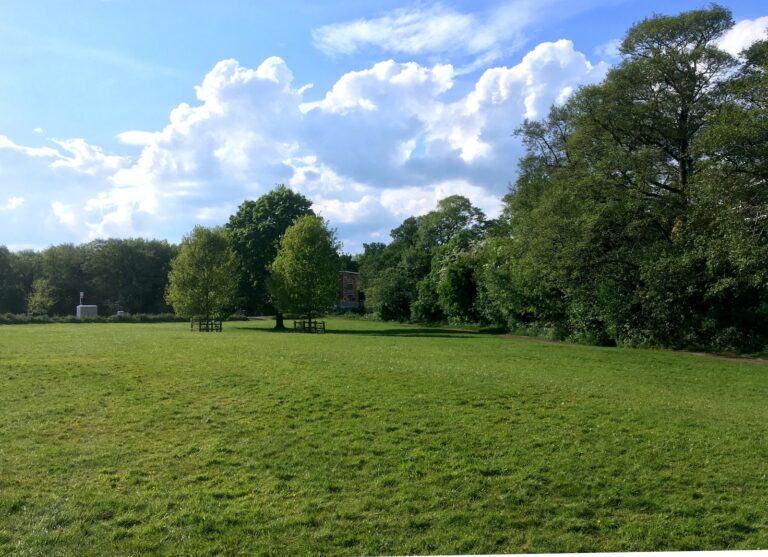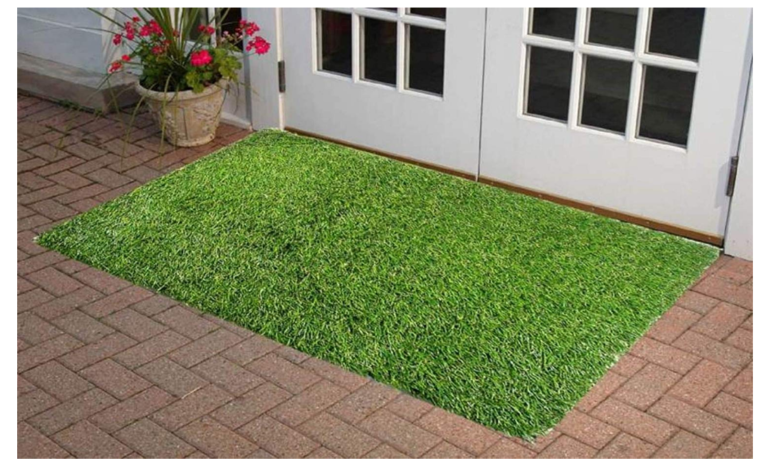How to Make Your Lawn More Pet-Friendly and Safe

Are you tired of having a patchy, muddy lawn thanks to your furry four-legged friends? As much as we love our pets, their playful nature and bathroom habits can wreak havoc on our yards. But fear not! With a few simple adjustments, you can transform your lawn into a pet-friendly oasis that is both safe and enjoyable for you and your animals.
From choosing the right grass to adding strategic landscaping features, this guide will help you turn your yard into the ultimate playground for your pets while maintaining its beauty and function. Let’s get started!
Why You Should Make Your Lawn Pet-Friendly
If you have a pet, chances are you want them to be able to enjoy your lawn just as much as you do. Making your lawn pet-friendly doesn’t have to be difficult or expensive.
Here are a few tips on how to make your lawn more pet-friendly and safe:
1] Use natural products: Pets are sensitive to chemicals, so it’s important to use natural products when fertilizer, pest control, or herbicides.
2] Keep the grass short: Long grass can hide things like sharp rocks or broken glass that could hurt your pet’s feet. It can also be difficult for them to walk through long grass without getting tangled up.
3] Provide plenty of shade: Pets can get sunburned, just like people! Make sure there are plenty of shady spots in your yard for them to relax in.
4] Avoid plants that are poisonous to pets: Many common household plants are actually poisonous to pets if they eat them. Be sure to do your research before planting anything in your yard.
5] Create a designated potty area: If you have a dog, it’s important to create a designated area for them to relieve themselves. This will help keep the rest of your lawn clean and free of waste.
How to Make Your Lawn Pet-Safe

As a pet owner, you want your furry friend to be able to enjoy the outdoors just as much as you do. But with all the potential hazards out there, it’s important to take some precautions to make sure your lawn is pet-safe.
Here are some tips for making your lawn more pet-friendly and safe:
- Keep your lawn free of harmful chemicals. Pesticides and herbicides can be toxic to pets if they ingest them or come into contact with them. Choose natural or pet-safe products instead.
- Avoid using mulch made from cocoa shells, which can contain toxins that can be harmful to pets. Stick with organic mulch options like wood chips or pine straw instead.
- Be careful not to over-fertilize your lawn. Excess fertilizer can burn a pet’s skin or make them sick if they ingest it. Apply fertilizer sparingly and according to package directions.
- Keep an eye out for common yard hazards like sharp objects, hole diggers (moles, voles, etc.), and poisonous plants. Be sure to remove or fence off any potential dangers in your yard.
By following these simple tips, you can help create a safe and enjoyable outdoor space for both you and your beloved pet.
Identifying and Treating Potential Hazards
As a pet owner, you are probably aware of the many potential hazards that can exist in your own backyard. But did you know that there are also many potential hazards that can exist in your neighbor’s yard – and even in public parks?
Here are some tips for identifying and treating potential hazards:
1] Be on the lookout for common hazardous plants. Some plants, such as foxglove and rhododendron, can be poisonous if ingested by pets. If you see these plants in your neighbor’s yard, or in a public park, make sure to keep your pet away from them.
2] Be aware of potential sources of water contamination. Standing water can be a breeding ground for bacteria and viruses, which can pose a health risk to both humans and animals. If you see standing water in your neighbor’s yard, or in a public park, make sure to keep your pet away from it.
3] Be cautious of rat baits and other poisons. Rat baits and other poisons can be very dangerous to pets if ingested. If you see these products in your neighbor’s yard, or in a public park, make sure to keep your pet away from them.
4] Keep an eye out for sharp objects. Sharp objects, such as broken glass or metal cans, can cause serious injuries if animals step on them or ingest them. If you see sharp objects in your neighbor’s yard, or in a public park, make sure to remove them so your pet doesn’t get hurt.
5] Watch out for wild animals and other potential predators. Wild animals and even house pets can be a threat to both humans and animals. If you see any wild animals, or if you suspect the presence of a predator, take steps to ensure the safety of everyone in the area.
By taking these simple steps, you can help prevent potential hazards from causing injury or harm to your pet or anyone else in the vicinity.
Optimal Fencing and Barriers

There are a few things to consider when choosing fencing or barriers to keep your pets safe in your yard. First, think about what material will work best for your pet. If you have a small dog that likes to dig, you’ll want to avoid materials like chain link that they can easily escape from.
Second, consider the height of the fence or barrier. A taller fence may be necessary if you have a dog that likes to jump. Make sure the fencing or barrier is installed properly and is in good repair so that your pet cannot escape.
Planting Pet Friendly Grass
It’s estimated that nearly 80 million American households have a pet, which means there are a lot of furry friends running around outdoors. And while most pets are well-behaved, there are always those occasional accidents that can leave unsightly bare spots in your grass.
That’s why it’s important to choose a pet-friendly grass seed that will be able to withstand the wear and tear of daily use.
There are a few things to look for when selecting a grass seed for your pet-friendly lawn:
1] Perennial Ryegrass: This type of grass is known for its durability and resilience, making it ideal for areas that see a lot of foot traffic. It’s also relatively low maintenance, meaning you won’t have to spend hours every week caring for your lawn.
2] Tall Fescue: Another great option for pet-friendly grass is tall fescue. This variety is tolerant to both heat and cold, so it will do well in any climate. It’s also resistant to disease and pests, making it a low-maintenance choice for busy pet owners.
3] Kentucky Bluegrass: Thisgrass is known for its beautiful blue hue, but it’s also very tough and resilient. It tolerates heavy foot traffic well and has a deep root system that helps it resist drought conditions.
4] Bermudagrass: If you live in a warm climate, bermudagrass is a great choice for your pet-friendly lawn. It’s incredibly durable and can withstand wear and tear with ease. Plus, it stays greener throughout the hottest months of summer, making it an excellent option for busy pet owners.
Finally, be sure to start off right by properly preparing your lawn before sowing the grass seed. This includes testing your soil and adding any necessary amendments as well as aerating the soil to improve drainage and water retention. With a bit of preparation and the right grass seed, you’ll have a lush, green lawn that can handle all of your pet’s activities.
Plant Selection & Maintenance
When it comes to choosing plants for your pet-friendly lawn, there are a few things to keep in mind. First, avoid toxic plants. Many common garden plants can be poisonous to pets if ingested, so it’s important to do your research before selecting anything for your yard. Secondly, opt for native plants whenever possible.
Not only are they typically more resilient to pests and disease, but they also tend to be lower maintenance overall. Consider your pet’s individual needs when making plant choices. If you have a dog that likes to dig, for example, you might want to steer clear of delicate flower beds and instead choose hearty shrubs or groundcover.
With a little planning and care, you can create a beautiful, pet-safe outdoor space that everyone in the family can enjoy.
Avoiding Pests & Diseases in Your Lawn
Pests and diseases can wreak havoc on your lawn, leaving it looking patchy and unhealthy. But there are some simple steps you can take to avoid these problems:
1] Keep your lawn mowed regularly. This will prevent pests from taking up residence in long grass, and will also make it harder for diseases to spread.
2] Remove any dead or dying grass clippings from your lawn. These can harbour pests and diseases, so it’s best to get rid of them as soon as possible.
3] Rake up any leaves that fall on your lawn. Again, these can provide a home for pests and diseases, so it’s best to remove them promptly.
4] Water your lawn regularly during dry periods. This will keep the grass healthy and strong, making it less susceptible to attack from pests and diseases.
5] Use a garden hose to spray away any insects that you see on your lawn. This will help to keep their population under control, preventing them from doing too much damage.
By following these simple steps, you can help to avoid problems with pests and diseases in your lawn, keeping it looking its best all year round!
Creating a Play Area for Your Pets
Assuming you have a lawn, or some green space at your home, consider using a portion of it as a play area for your pet. It’s important to choose an area that’s both safe and appealing to your pet. If you have more than one pet, you may need to create separate areas for each.
Here are some things to keep in mind when creating a play area for your pet:
– Safety first: Make sure the area is free from potential hazards like sharp objects, toxic plants, and busy roads.
– Fencing: A fence can help containment and keep other animals out.
– Shade and shelter: Provide some shade and shelter from the elements for your pet to enjoy.
– Toys and agility equipment: Include some toys and/or agility equipment like jumps or tunnels for your pet to play with.
Conclusion
Making your lawn pet-friendly and safe is an easy way to add value and make it more enjoyable for both you and your furry family members. By following our tips, we believe that you should have a much better understanding of what needs to be done in order to ensure the safety of your pets when they are outside playing or just enjoying the outdoors.
Whether its improving the drainage system or making sure all hazardous objects are kept away from them, there is something everyone can do to create an outdoor space that is as safe as possible for their beloved four-legged friends.

James is a passionate writer and gardener with years of experience in home gardening. He is the author of several articles and blog posts on HomeGardenBlog.com, a platform where he shares his expertise and love for plants and gardening with the world.







